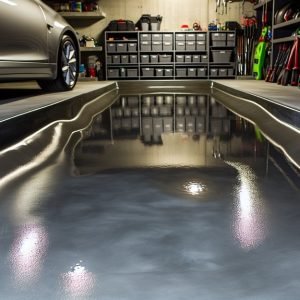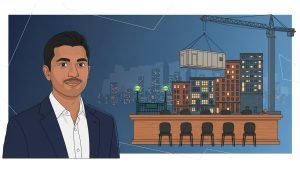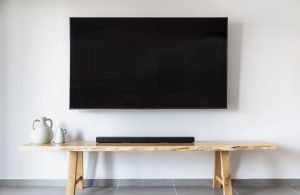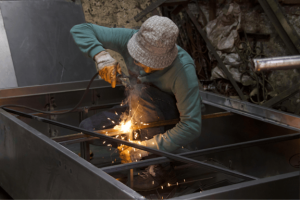Last Updated on October 30, 2025 by teamobn
Prefab homes arrive finished, fold out fast, and plug straight into local utilities. They slice months off construction schedules that traditional builds can’t match. Factory production also trims waste and keeps prices within reach of first-time buyers. Cities like Phoenix and Austin now weigh prefab projects to backfill missing middle housing. Innovative brands such as Boxabl round out these gains with expandable designs.
Contents
The Scale of the U.S. Housing Shortage
The United States faces an unprecedented housing inventory gap. Traditional building methods can’t close it quickly, pushing prices beyond reach for millions.
Growing Demand Outpaces Construction
Household formation keeps rising while annual housing starts lag far behind historic norms. Remote work and population shifts swell buyer queues in suburbs once considered slow markets.
Builders finished roughly 1.4 million units last year, yet economists say keeping pace requires at least 2 million for several years straight. Families compete for the same listings, so entry-level buyers stretch budgets or settle for long commutes. Supply pressure also inflates rents, crowding wage earners who can’t find a path to ownership.
Stagnant Supply Chains and Labor Gaps
Lumber, drywall, and HVAC components still move through fragile chains built for just-in-time delivery. Delays ripple from ports to job sites, idling crews and inflating bids. Skilled trades also age out faster than apprentices arrive, leaving contractors short of carpenters and electricians.
Those shortages extend project timelines and force overtime that pads final costs. When capital sits tied up on stalled foundations, developers trim future starts, reinforcing the vicious cycle of under-building.
Rising Costs Squeeze Builders and Buyers
Land prices soar where zoning restricts density. Interest rates lift borrowing costs for both developers and homeowners, limiting the pool of qualified borrowers. Insurance premiums jump in wildfire and hurricane zones, adding to monthly mortgage math.
Construction loans carry tighter terms, so smaller builders struggle to hold ground against large firms with deeper credit lines. As budgets burst, developers pivot to luxury projects that promise higher returns, leaving affordable stock unfunded.
Regional Hotspots and Demographic Pressure
Sun Belt metros like Austin, Phoenix, and Tampa lure workers looking for lower taxes and warmer weather. College towns burst each August, and tech corridors never catch up with hiring booms. Aging Baby Boomers search for accessible downsized homes, yet local inventories target higher-end buyers.
Millennials start families later but in larger numbers, intensifying demand around good school districts. Every group hunts the same limited listings, turning bidding wars into the new normal.
What Sets Prefab Homes Apart From Site-Built Construction
Prefab homes rely on assembly line efficiency. They merge precise engineering with rapid delivery, standing apart from lumber stacks and nail guns on most job sites.
Factory Precision and Quality Control
Climate-controlled factories guard every board and pipe before assembly. Precision tools deliver near-perfect cuts that boost quality and stop costly on-site fixes.
- Controlled environments prevent moisture damage, warping, and theft
- CNC saws and routers cut panels within tight tolerances
- Electrical, plumbing, and insulation go in under one roof and clear repeatable inspections
- Consistent assembly limits human error, so fewer defects leave the plant
- Tight quality keeps warranties small and lowers costly callbacks for contractors
Time Savings on Site
Prefab modules arrive after the foundation sets, not before. That overlap slashes project calendars and shrinks weather delays that haunt stick builds.
- Foundation work and factory work run at the same time
- Finished modules travel by truck, crane into place, and bolt together in days
- Short site presence reduces weather delays and neighborhood disruption
- Developers unlock revenue quicker and avoid long interest carry
- Homeowners skip double housing costs and move in sooner
Cost Predictability and Budget Discipline
Factory work replaces guesswork with fixed material lists and timed shifts. Clear pricing shields lenders and buyers from overruns that sink budgets.
- Plants buy lumber, steel, and fixtures in bulk at lower rates
- Automated cutting and assembly cut waste commonly found on stick builds
- Scheduled shifts avoid overtime spikes that inflate bids
- Contractors lock prices early, giving banks solid numbers to underwrite
- Buyers see clear stickers that include finishes, appliances, and installation
Sustainability Gains in Materials and Energy
Prefab construction saves wood, fuel, and carbon before the home even ships. Efficient envelopes keep energy bills low for decades.
- Off-site precision reduces scrap, saving trees and landfill space
- Panels ship pre-insulated to high R-values, lowering heating and cooling loads
- Many factories run partly on renewable energy that cuts embodied carbon
- Shorter build times mean fewer generator hours and truck trips
- Cleaner construction helps cities meet climate targets while adding new homes
Policy Moves to Unlock Prefab’s Potential
Local codes still favor stick-built houses. Smart policies that update zoning, finance, and inspections can unlock prefab innovation without sacrificing safety or neighborhood character.
Updating Zoning to Welcome Modular Units
Many jurisdictions still limit accessory dwellings, height, or lot coverage in ways that block factory-built options. Allowing duplexes or courtyard clusters on single-family lots can add gentle density without towering complexes.
Pattern books that pre-approve modular designs give planners confidence and speed approval. Clear setback rules for cranes and transport trucks remove guesswork that slows permits. When land-use rules align with compact footprints, prefab builders can finally scale within city limits.
Streamlining Approvals and Inspections
State programs that certify factories upfront let inspectors focus on foundations and utility tie-ins rather than repeating factory checks on site. Digital plan reviews cut weeks off paper shuffles between agencies.
Coordinated scheduling of cranes, power companies, and code officials prevents idle days after modules arrive. Predictable timelines reduce carrying costs, encouraging smaller developers to adopt prefab even on tight margins.
Financing Tools for Off-Site Manufacturing
Traditional lenders disburse funds after milestones like framing completion, yet modular homes arrive nearly finished. Construction-to-permanent loans that release payments at factory stages keep cash flowing to suppliers.
Green bonds or tax-exempt financing can reward energy-efficient designs with lower interest rates. Insurance products that cover transit and lifting risks reassure underwriters who worry about split liability between plant and site. Clear appraisal guidelines comparing modular to comparable site-built homes protect resale values.
Building Public Confidence Through Pilot Projects
Demonstration villages let neighbors walk through finished units and judge quality firsthand. Cities can partner with nonprofits to place modular homes on vacant lots for teachers, nurses, or veterans.
Transparent data on energy bills, maintenance costs, and tenant satisfaction dispels myths about “trailer” construction. When early adopters show strong market demand, private banks and large developers follow, multiplying supply. Success stories become templates other regions can copy with minimal adaptation.
Why Boxabl’s Fold-Out Casita Shows the Future
Boxabl’s fold-out Casita distills prefab innovation into one transportable box. Its rapid deployment and modular connections hint at how tomorrow’s neighborhoods could grow.
On-Site Setup in Under an Hour
Crews roll the crate-sized module off a flatbed and guide it onto a prepared slab. A patented folding frame swings the walls and roof into place in minutes. Hydraulic hinges unfold the walls and roof in minutes, so trades hook up power, water, and sewer the same day. Neighbors see a clean site with little noise or debris. Owners move in fast and skip months of carrying costs that plague stick builds.
Factory Quality that Travels
Boxabl Casita panels leave a climate-controlled line with wiring, plumbing, windows, and finishes already locked in place. Tight tolerances keep joints square and energy ratings high. Forklifts load the finished shell for highway transport at the standard 8-foot-6 width, so no special permits slow the trip. That factory consistency means every buyer receives the same airtight envelope and code-ready systems.
Key Features That Put Casita Ahead
The Casita’s design packs big-home comforts into a small footprint and keeps future growth on the table. Its feature set shows why this prefab model points to housing’s next chapter.
- Ships as a single 8′-6″-wide crate that fits regular trucks and highways
- Unfolds to 361 – 722 ft² with 9′-6″ ceilings for an open, airy feel
- Arrives with a full-size kitchen, bath, HVAC mini-split, and appliances installed
- High-R-value insulation and tight seals lower utility bills year-round
- Steel, concrete, and EPS panels resist fire, mold, and pests better than lumber
- Modules link side-by-side or stack three high, letting owners add rooms later
- Minimal site prep limits excavation waste and speeds local inspections
Conclusion: Prefab Homes Against US Housing Crisis
America’s housing deficit keeps widening and pushes ownership out of reach for many families. Traditional site-built methods can’t fill the gap fast enough because they’re slowed by labor shortages, supply chain hiccups, and rising land costs. Prefab homes answer those hurdles by slashing build times, cutting waste, and locking prices before ground is even broken.
Cities that streamline zoning and finance for modular projects will unlock thousands of new units without sprawling into farmland. Boxabl’s fold-out Casita proves how factory-finished homes can land on a slab today and welcome residents tomorrow.
Prefab homes have been around for a long time. Check out the one in Bucharest, Romania.






